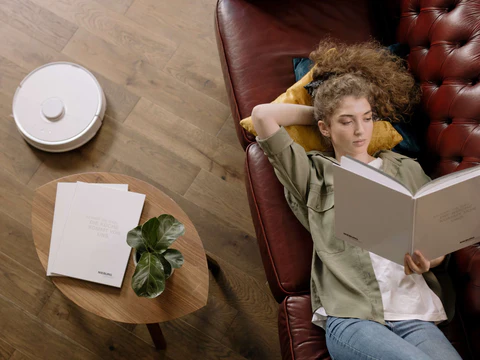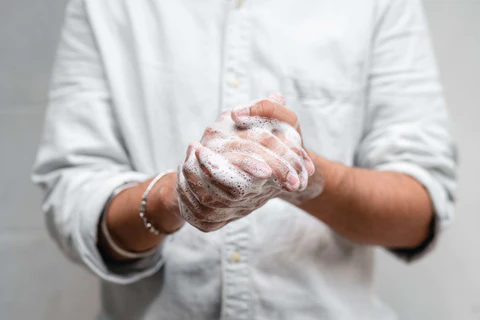How To Properly Disinfect
Our homes are supposed to be a safe haven where we can relax and recuperate from what we’ve encountered out in the world. Unfortunately, we wind up bringing home the world and all its germs through dirty hands, shoes, clothing, and phones.

Even if your home looks clean, it may still harbor contaminants that could affect your health. As a rule of thumb, any area of your home with high traffic and surfaces that get touched a lot is a germ bank. Not all germs are harmful. But where there are germ strongholds, the conditions are favorable for disease-causing viruses or bacteria to lurk.

After washing our hands (20 second rule), the next best way to protect your family is to wipe down the areas and surfaces that are shared by family members.
Clean and Disinfect
The first thing you’ll want to know is that cleaning and disinfecting are two very different things and should not be used interchangeably. The former means you’re removing germs but not killing, while the latter means you’re actually killing them. This distinction is important because you might clean surfaces effectively but you might not be disinfecting, leaving germs and bacteria to fester and grow. The CDC recommends we all do a bit of both, even if nobody in your household is sick.
- Cleaning is about removing contaminants from a surface.
- Disinfecting is about killing pathogens.
- Do both daily if anything or anyone has entered or exited your home.
Transmission from person-to-person is a much greater risk than transmission via surfaces, but the CDC recommends we clean and disinfect high-touch surfaces in our homes at least once daily just to be safe, assuming we have had contact with the outside world in some way, either a person leaving and returning or goods coming in.
Target Your Home’s High-Touch Surfaces
Researchers have found that the novel coronavirus is capable of living on surfaces such as cardboard for 24 hours, but up to two or three days on plastic and stainless steel. So cleaning and disinfecting high-touch surfaces is a step we should all take, even if we aren’t leaving the house. Anytime items or people come in and out of your home, there is some possibility of exposure.

High-Touch Surfaces to Clean and Disinfect Daily:
- Doorknobs
- Table surfaces
- Hard dining chairs (seat, back, and arms)
- Kitchen counters
- Refrigerator handles
- Microwave handles
- Oven knobs
- Bathroom counters
- Faucets knobs
- Toilets (flushing handles, seats, and lids)
- Light switches
- TV remote controls
- Game controllers
Everyone’s home is a little different, so just think about the surfaces you interact with most. For many of us that are now working from home, that probably includes the above, plus desk surfaces, laptops and mousepads. Now that you know what you’re cleaning, here’s how you should do it.
First Clean, Then Disinfect:

1. First, clean the surfaces, removing any visible grim, dust, or debris. You can do this by wiping them with soapy water (or a cleaning spray) and a hand towel.
2. Then apply a surface-appropriate disinfectant. The quickest and easiest way to do this is with disinfecting wipes or disinfectant spray like Boulder Clean Disinfectant Cleaner. It is important to read labels and follow the directions on products. Products labeled as disinfectants will adequately kill viruses and bacteria if used correctly.
Use a paper towel that can be tossed away or a cotton cloth that can be washed after each use. Sponges should not be used for cleaning because they can harbor bacteria in the crevices.
That’s it. Just adding these to your daily routine can help lower the risk of infection for you and anyone else in your household. If you aren’t able to obtain disinfectants at this time, just do a thorough job with the soap or cleaning agents you do have.
Note: We caution against mixing any cleaning products together, because the outcome could be dangerous (or one product could simply neutralize another, causing it to be ineffective).
Room-Specific Tips:

Bathroom
In addition to hard surfaces like showers, toilets, and bathroom counters, be sure to wash towels and bathmats regularly. A fresh hand towel should be put in place at least daily. Giving everyone a new toothbrush regularly, and especially after getting over a cold, can also help keep bacteria levels under control.
Kitchen
Many disinfecting products, including ones with chlorine bleach or ammonia, are not safe to use in food preparation areas without an added step of a rinse after disinfecting. That’s why you need Boulder Clean Disinfectant Cleaner – botanically based, it is formulated without toxic chemicals to sanitize food contact surfaces with no rising required. The one-step disinfectant kills bacteria like E. coli, salmonella, and staphylococcus aureus on plastic and sealed wood cutting boards, stone, tile, and laminate countertops.
If you are using an automatic dishwasher with the proper water temperature of 140 degrees Fahrenheit, you can rest assured that eating utensils, dishes and glassware are disinfected and free of bacterial growth.
Living Room
When disinfecting shared living spaces, don’t forget to treat soft-surfaces like throw pillows and upholstered furniture as well as hard surfaces.
Bedroom
Mattresses, pillows, and some bedding just can’t be tossed in the washer so use a spray that is safe to use on fabrics. The key to proper protection is to cover the surface with the mist and allow it to remain wet for at least 30 seconds up to 10 minutes so the active ingredients in the spray have time to work (check the label for specific timing).
Washing sheets and pillowcases and drying them at a high heat will take care of most of the harmful bacteria.

Cars
After a trip, take a few minutes to wipe down the steering wheel, inside and outside door handles, dashboard controls, garage door openers, and your keys or key fobs.
